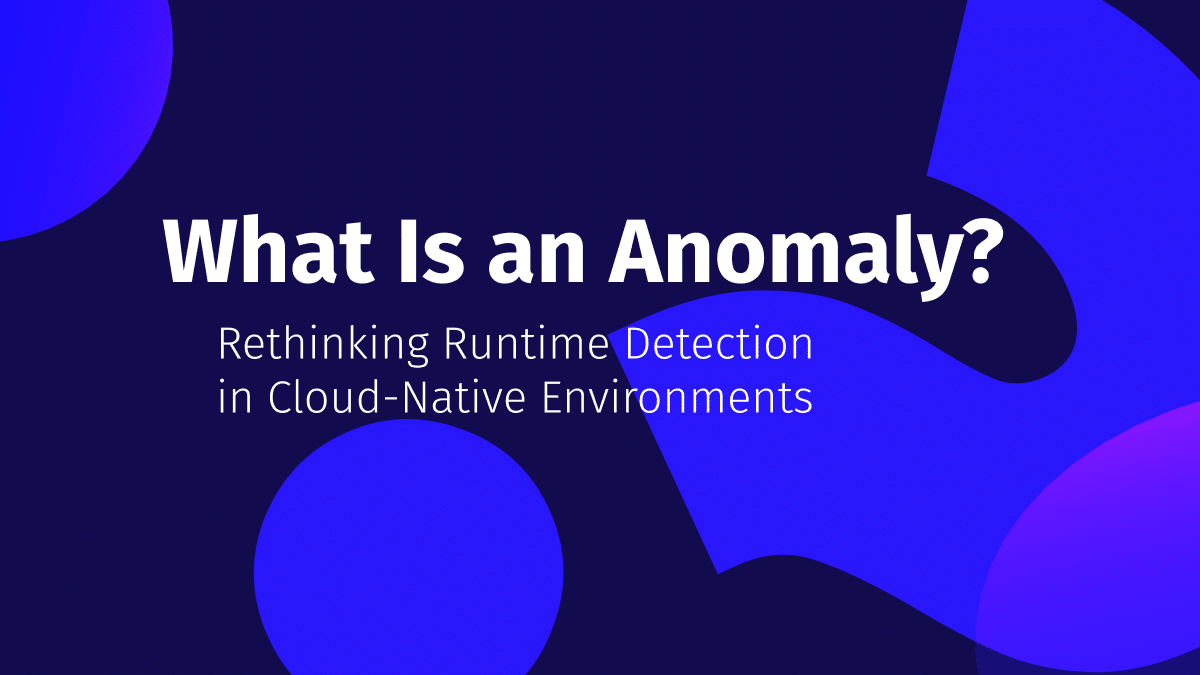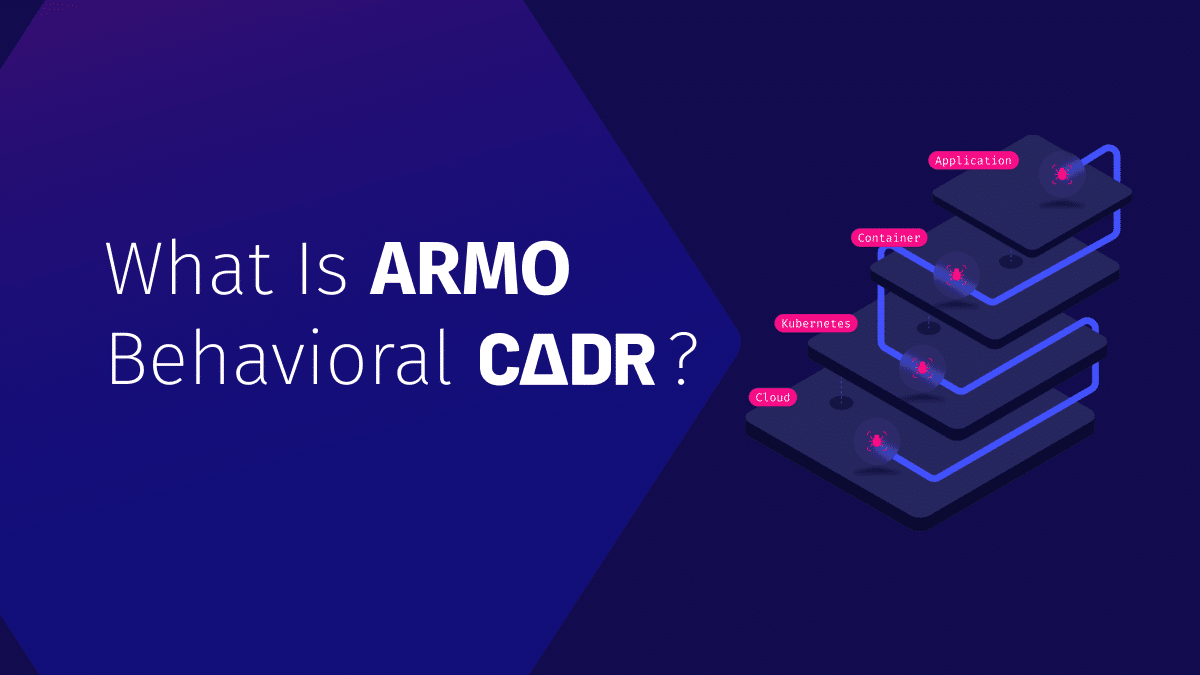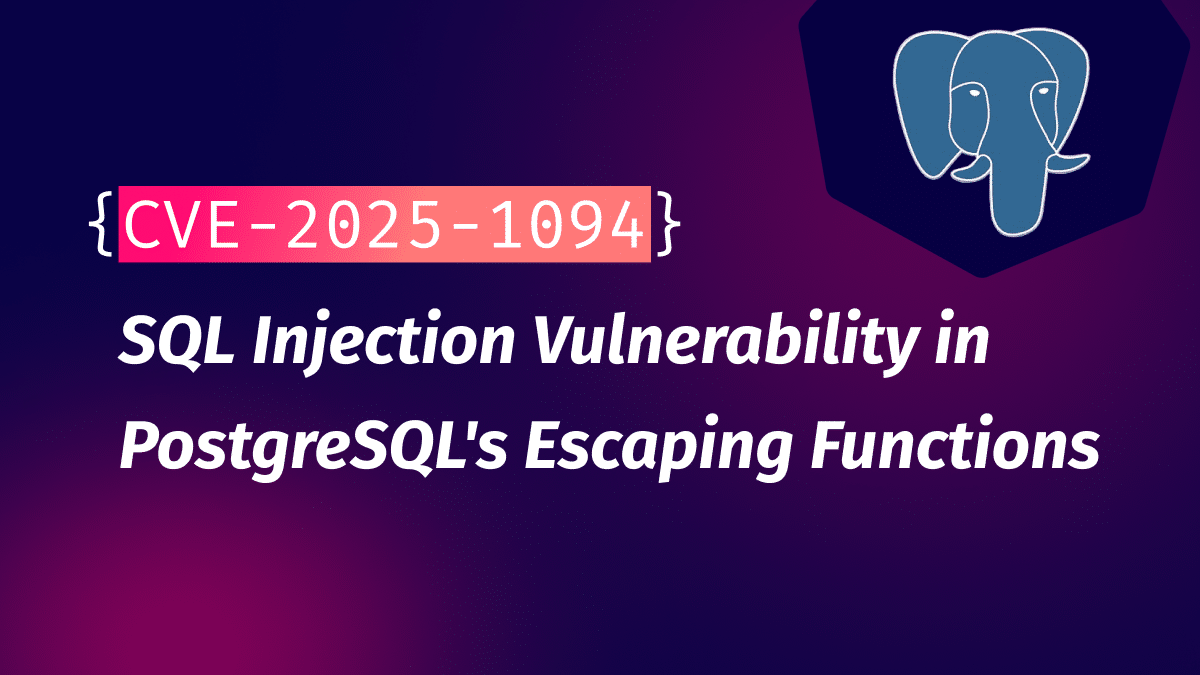What Is an Anomaly? Rethinking Runtime Detection in Cloud-Native Environments
“Anomaly detection” has become a core capability in modern cloud security. Yet despite its ubiquity...

Mar 31, 2025
Containerization, a form of lightweight virtualization, lets applications inhabit their own self-contained environments. Each container packages everything an application needs to run – code, runtime, libraries – keeping it neatly separated from everything else. This isolation is a big deal because it means a problem in one container won’t bring down the whole environment.
Container runtime is the unsung hero behind the scenes. It’s the software that actually brings these containers to life. It communicates to the host operating system, making sure containers are created, started, stopped, and deleted smoothly. You’ve probably heard of some popular runtimes like Docker, containerd, and CRI-O – they’re the ones making sure your containers are acting as expected.
We all know the drill when it comes to application security: sanitize input, write clean code, patch vulnerabilities. But container runtime security is different. It’s not limited to hardening the application or the infrastructure it runs on. Think of it as a building’s security system – not only monitoring who enters but also ensuring no one tampers with the infrastructure, fire alarms, or electrical systems once inside.
Why is this so important? Well, containers, by their nature, share the host operating system’s kernel and resources. If an attacker finds a weakness in the runtime environment, they’ve found a back door that can be leveraged to access the entire building. By exploiting these vulnerabilities, attackers could move laterally across the container environment, potentially gaining root access to the host machine. This could allow them to compromise the entire system, install malware, or even launch further attacks against other systems on the network.
Securing a container runtime environment requires understanding the intricate interplay of its components.
The container runtime is the engine room of your containerized applications. Software like Docker, containerd, and CRI-O handle the heavy lifting of pulling images, spawning containers, and managing resources. Yet these powerful mechanisms can also be exploited if they’re not properly secured.
Keeping the runtime up to date is a priority. Vulnerabilities lurk in every corner of software, and even minor flaws can be leveraged by attackers. Hardening your container runtime environment, by limiting its permissions to only what it absolutely needs, is another necessary step. Don’t give containers more power than they require.
Then there’s the matter of isolation. Tools like gVisor or Kata Containers add an extra layer of container runtime protection, creating a virtualized sandbox for each container. This helps prevent malicious containers from wreaking havoc on the host system or other containers.
A container image is like the blueprint for your application, containing all the necessary code, libraries, and dependencies. A poorly crafted image can introduce vulnerabilities into the system.
Start by using trusted base images from reputable sources. Regularly scanning images for known vulnerabilities with image scanning tools is essential. Remember, that in a certain context even one vulnerability can have cascading effects.
Minimize the size of your images by using lean base images like Alpine Linux. This reduces the attack surface and makes it harder for attackers to find and exploit vulnerabilities. Using signed images and verifying their signatures with tools like Cosign is considered a best practice. This approach ensures image integrity, helps prevent tampering, and significantly enhances the security of your container deployments. Finally, don’t forget about access controls. Restrict who can push and pull images from your container registries to prevent unauthorized access or modifications.
Linux kernel level features like namespaces and control groups (cgroups) are the unseen powers behind container isolation. Namespaces carve out isolated views of system resources, preventing spill-over between containers and ensuring that they cannot access each other’s data or sensitive host information.
cgroups, on the other hand, act as traffic controllers, managing the allocation of resources like CPU, memory, and disk I/O. This prevents resource-hungry containers from monopolizing all the system’s resources and causing performance issues.
Container networking can be a double-edged sword. It enables the smooth communication of distributed applications but can also create security and reliability risks if not properly configured.
Network segmentation is crucial. Always enforce strong authentication and authorization mechanisms to control access to your container network. Service mesh technologies like Istio or Linkerd play a vital role in achieving this. By creating virtual networks and enforcing fine-grained control over inter-service communication, these tools enable strong isolation between containers and microservices. This significantly reduces the impact of a breach, as it prevents attackers from easily moving laterally across the application and accessing sensitive data or disrupting critical services.
Security policies and configurations are guardrails for your container runtime. They define the boundaries of acceptable behavior and help enforce best practices.
Follow the principle of least privilege (PoLP) and avoid running containers as root users whenever possible. Regularly audit your configurations using tools like Docker Bench for Security. Embrace infrastructure-as-code (IaC) to manage your container configurations in a repeatable and auditable way.
Continuous monitoring and increased visibility is vital for the security team to detect and respond to incidents. Tools like ARMO Platform can monitor container activity for suspicious behavior, such as unusual system calls or attempts to escalate privileges.
Centralize your logs using platforms like the ELK Stack or Prometheus and Grafana to make them easier to analyze. Ensure that you’re logging critical container operations, such as image pulls and runtime errors, to maintain a robust forensic trail.
Addressing the various components of a container runtime ecosystem as an integrated whole enables the creation of a secure and balanced environment. This balance is achieved by attending to both scalability and protection. Remember, security is not a one-time task but an ongoing process that requires continuous adaptation.
Container runtimes, while offering significant flexibility and scalability, introduce a whole new set of security challenges. Understanding these risks isn’t just a good idea, it’s imperative for anyone serious about securing containerized infrastructure.
This one’s a classic. Attackers exploit weak authentication, steal credentials, or leverage unpatched vulnerabilities to slip into containerized systems. Once inside, they can escalate privileges, siphon off sensitive data, or wreak havoc on your services.
Containers in a cluster are like apartments in a building, each with its own residents and activities. If the building’s security is lax — unlocked doors, faulty locks, open windows — it’s easy to walk in. Strong measures, like securing entrances and monitoring activity, ensure only the right people and actions are allowed, protecting both individual apartments and the building as a whole.
Misconfigured networking in your container environment, like exposed ports or overly permissive access controls, can create gaping holes for data leakage. This isn’t only about regulatory fines or PR nightmares; it can give attackers the information they need to launch more sophisticated attacks.
Organizations must be diligent about controlling network access, encrypting sensitive data both at rest and in transit, using network security policies to restrict communication between containers.
This is where things get really nasty. A container escape happens when an attacker finds a way to break out of the isolated containerized environment and onto the host system, seeking lateral movement to other containers. Organizations must be proactive about hardening their containers, keeping everything patched and updated, and running containers with restricted privileges.
The kernel is the bedrock of your containerized environment. If it’s compromised, the whole system is at risk. A severe kernel level exploit can give attackers unrestricted access, allowing them to escalate privileges, execute arbitrary code, or take complete control.
Keeping the host operating system patched and updated is essential. You might also want to consider using lightweight virtual machines to provide an extra layer of isolation between containers and the host kernel. Alternatively, if you are running on modern container runtimes and orchestration platforms, you can employ advanced security features such as seccomp, AppArmor and SeLinux.
Containers often rely on third-party libraries and dependencies, some of which may harbor hidden security issues. These vulnerabilities can be exploited to compromise applications or even gain a foothold in your entire environment.
Think twice before using images from untrusted sources. You don’t know what might be lurking in those dependencies. Regularly scanning container images for vulnerabilities, using dependency management tools, and favoring minimal base images can help mitigate this risk.
Insecure configurations, like default credentials or overly permissive access controls, are often the easiest targets for attackers. Regularly auditing your container and orchestrator configurations, performing security testing, and adopting immutable infrastructure practices can help you avoid these common pitfalls.
Organizations that address these security risks head-on have what it takes to build a more resilient and secure containerized environment.
We’ve spent some time dissecting the inner workings of container runtimes, exploring everything from the core components to the potential pitfalls lurking in the shadows. While containerization has redefined application development by delivering unprecedented speed and scalability, these benefits also introduce unique risks – particularly at runtime, when vulnerabilities can manifest in real-time.
The key to mitigating these risks is in early detection and swift response to indications of an attack during runtime. This is where ARMO Platform excels. ARMO monitors application and container activity in real-time and protects against high-stakes vulnerabilities like container escapes before they can disrupt operations.
Book a free demo of ARMO platform today and experience security that evolves with your containers.

“Anomaly detection” has become a core capability in modern cloud security. Yet despite its ubiquity...

As organizations increasingly adopt cloud-native architectures, they face a sprawling attack surface with novel threats...

Introduction CVE-2025-1094 presents a critical challenge to established SQL security paradigms, effectively circumventing fundamental best...